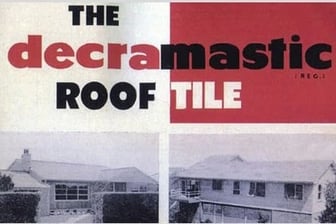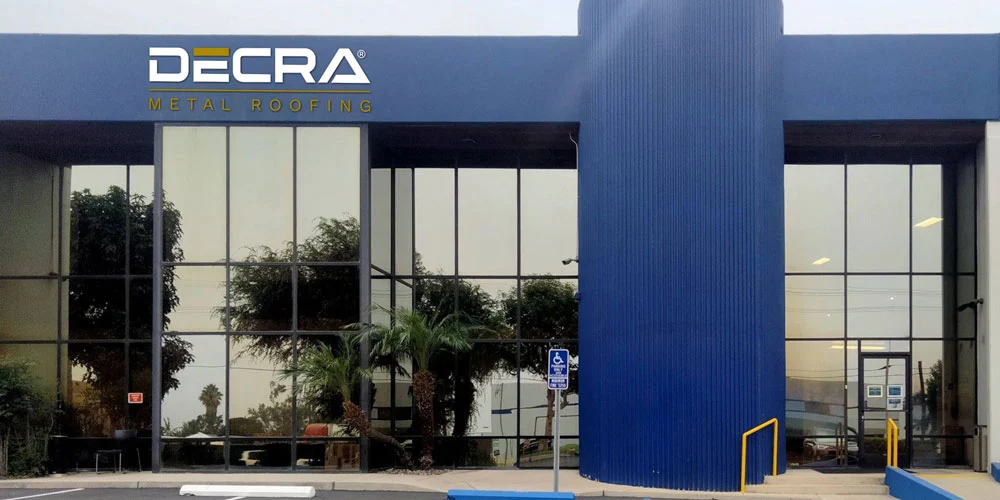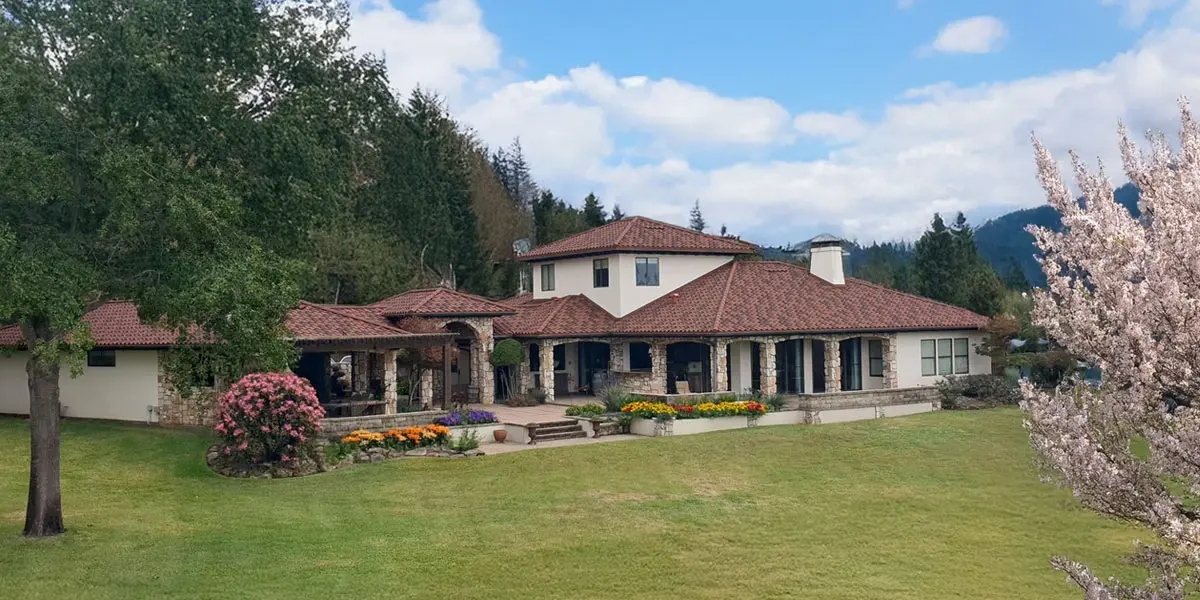Ever wondered how DECRA Metal Roofing transforms sheets of steel into a beautiful and durable roofing product?
The story begins in 1939 England, where sheets of metal were coated with an emulsion formula to help camouflage critical Allied Command buildings from German bombers. Today, DECRA has innovated and improved upon that original formula to provide homeowners with one of the strongest, longest-lasting, and aesthetically pleasing roofing materials on the market.
Keep reading to learn how DECRA Metal Roofing is made, from the original formula developed in WWII England to how we manufacture modern stone-coated metal roofing at our state-of-the-art facility today.
- How long has DECRA Metal Roofing been around?
- What is DECRA Metal Roofing made of?
- Where is DECRA Metal Roofing manufactured?
How Long Has DECRA Metal Roofing Been Around?
In 1939, under heavy bombing by the Germans, the British had to quickly rebuild strategic buildings with makeshift materials, such as sheets of corrugated metal.
Unfortunately, the shiny, highly reflective metal sheets made for easy targets when the Germans dropped flares prior to air raids.  Allied Command desperately needed a solution, so they commissioned a local bituminous emulsion manufacturer, The Decraspray Co., to develop a coating that would camouflage the shiny metal roofs. Decraspray's industrial chemists got to work and quickly developed an emulsion coating that was water-proof, durable, and effectively camouflaged the shiny metal sheets.
Allied Command desperately needed a solution, so they commissioned a local bituminous emulsion manufacturer, The Decraspray Co., to develop a coating that would camouflage the shiny metal roofs. Decraspray's industrial chemists got to work and quickly developed an emulsion coating that was water-proof, durable, and effectively camouflaged the shiny metal sheets.
After the war, the Decraspray coating had bonded so well to the metal sheets it was nearly impossible to remove. When the chemists at Decraspray were finally able to remove it, they saw that the underlying metal was in perfect condition–even after being exposed to the elements for more than a decade. Decraspray saw the potential of this formula and sold it to industrial developers and contractors.
In 1957, a New Zealand industrialist named Lou Fisher started experimenting with the formula. He applied it to metal roof tiles made of galvanized steel and added crushed stone granules to develop a metal roofing product that was more appealing to the residential market.  The result of Fisher's metal roof experiment? The launch of the world’s first stone-coated steel tiles, originally branded as Decramastic. The Decramastic product line is now globally known under the DECRA Metal Roofing name and has been continuously improved and innovated since 1957.
The result of Fisher's metal roof experiment? The launch of the world’s first stone-coated steel tiles, originally branded as Decramastic. The Decramastic product line is now globally known under the DECRA Metal Roofing name and has been continuously improved and innovated since 1957.
What is DECRA Metal Roofing Made Of?
Today, the original Decramastic formula has been enhanced with high-grade multi-layered steel and advanced zinc-aluminum alloy coatings.
Steel
DECRA manufactures all of its roofing products from structural quality steel sheets. These sheets meet the highest industry standards, designated as ASTM A 792/A 792-10 grade 37. The steel is expertly modified to be more malleable, with a minimum 22% elongation capability.
Zinc-Aluminum Alloy Coating
Next, the structural steel is treated with a protective metallic coating applied in a hot-dip process. This alloy layering is composed of aluminum, zinc, and silicon.
Using multiple metals leverages their distinct anti-corrosion strengths. Zinc and aluminum each have excellent protective capacities separately, however, blending both metals together in the coating process further enhances overall corrosion resistance.
Silicon
While the aluminum-zinc coating delivers superb corrosion resistance, DECRA enhances the formula further with added silicon. This keeps the protective metal alloys firmly bonded to the steel, preventing separation over products' lifetimes. Additionally, the silicon allows for flexibility during manufacturing and installation, enabling bending without compromising the internal coating layers.
Acrylic Resin Coatings
DECRA applies an advanced acrylic resin coating to both sides of the alloy-coated steel. This state-of-the-art coating serves multiple purposes. First, its lightly tinted brown or clear variations resist fingerprints and scuff marks during handling and installation. Second, the acrylic formulation creates an optimal bonding surface for the decorative mineral granules. Third, it provides additional corrosion and UV weathering protection for the metal below.
Stone-Coated Granules
DECRA bridges industrial durability and aesthetic design through an innovative stone-coating process. Natural granules are crushed into various sizes and coated with fade-resistant pigments. Computerized equipment blends and applies these uniquely colored stones across DECRA’s steel panels. This replicates the look of traditional roofing materials like asphalt shingles, clay tile and wood shake.



Strict quality testing like spectrophotometer color readings happens at multiple stages during the manufacturing process to ensure proper granule adhesion and consistent hues for decades.
Where is DECRA Metal Roofing Manufactured?
DECRA Metal Roofing products are manufactured at our state-of-the-art 108,000-square-foot facility in Corona, California.

More than 40 employees help DECRA lead the way in both productivity and safety through a lean manufacturing culture.
Our 5-step manufacturing process includes:
- Fabrication and stamping of the high-grade steel panel blanks.
- Application of the basecoat.
- Application and bonding of granular stone chips.
- Application of the protective overglaze coat.
- Final curing of the finished stone-coated steel product.
With the manufacturing processes centralized under one roof at our California facility, DECRA maintains strict quality control over every roofing panel we produce.
Our commitment to quality and workplace safety is second to none, as illustrated by our ISO certifications.
ISO is an international organization that develops standards for quality, environmental, and occupational health and safety management systems.
DECRA has obtained ISO 9001 certification for its quality management system, ISO 14001 certification for its environmental management system, and ISO 45001 certification for its occupational health and safety management system.
Why DECRA Metal Roofing?
DECRA metal roofs are resistant to hail, winds, storms, hurricanes, tornadoes, fire, and nearly anything else Mother Nature has to offer. Not only are DECRA metal roofs engineered to endure the elements, but they are also one of the most energy-efficient roofing materials and can reduce energy costs by up to 40%.
But the benefits don’t stop there.
Unlike traditional roofing materials, DECRA metal roofs are a low-maintenance and sustainable product that is 100% recyclable at the end of its lifespan.
Whether you prioritize strength, style, or sustainability, DECRA Metal Roofing will provide you with decades of industrial-strength protection without sacrificing on style.
Ready to see and feel the DECRA difference? Order a complimentary sample today.
Editor's Note: This blog was originally published in November 2020, but has been updated with relevant content.






